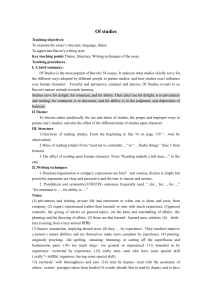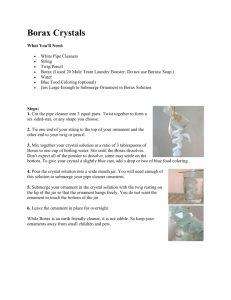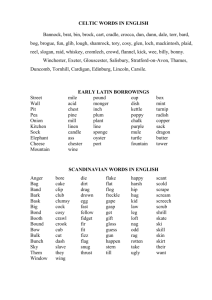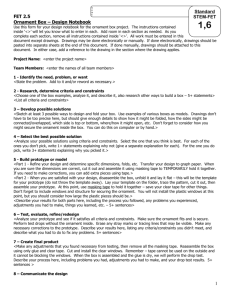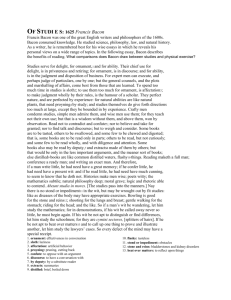5-1. Can you discern some critical distinctions between critiques of... century and those in the 20th? Describe by using one...
advertisement
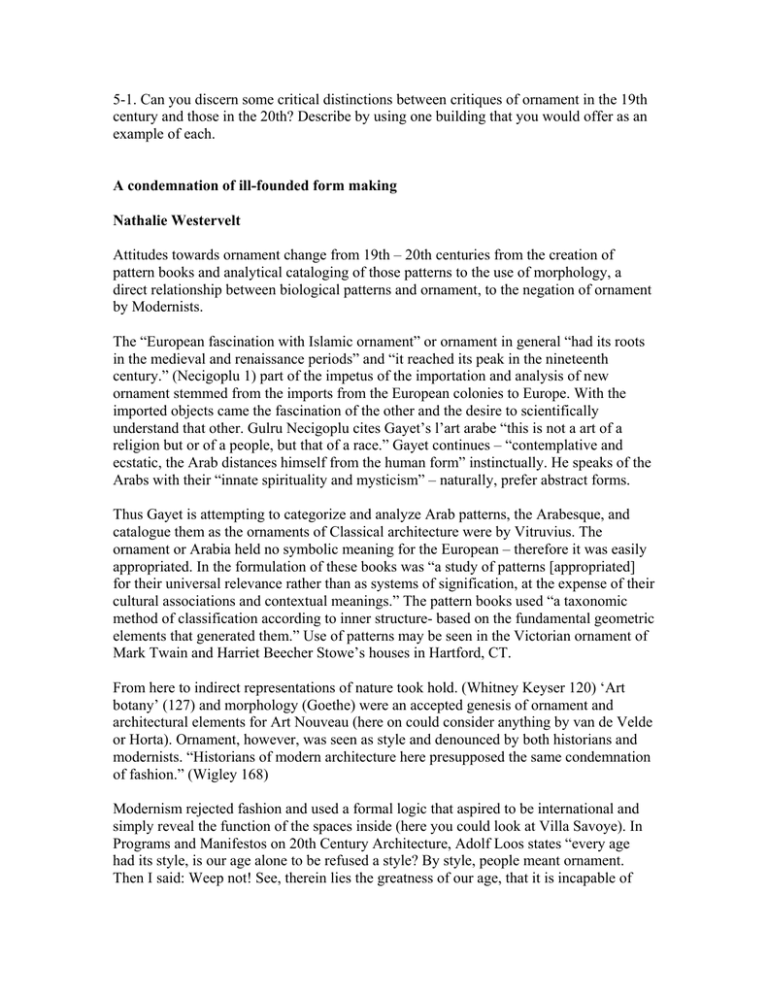
5-1. Can you discern some critical distinctions between critiques of ornament in the 19th century and those in the 20th? Describe by using one building that you would offer as an example of each. A condemnation of ill-founded form making Nathalie Westervelt Attitudes towards ornament change from 19th – 20th centuries from the creation of pattern books and analytical cataloging of those patterns to the use of morphology, a direct relationship between biological patterns and ornament, to the negation of ornament by Modernists. The “European fascination with Islamic ornament” or ornament in general “had its roots in the medieval and renaissance periods” and “it reached its peak in the nineteenth century.” (Necigoplu 1) part of the impetus of the importation and analysis of new ornament stemmed from the imports from the European colonies to Europe. With the imported objects came the fascination of the other and the desire to scientifically understand that other. Gulru Necigoplu cites Gayet’s l’art arabe “this is not a art of a religion but or of a people, but that of a race.” Gayet continues – “contemplative and ecstatic, the Arab distances himself from the human form” instinctually. He speaks of the Arabs with their “innate spirituality and mysticism” – naturally, prefer abstract forms. Thus Gayet is attempting to categorize and analyze Arab patterns, the Arabesque, and catalogue them as the ornaments of Classical architecture were by Vitruvius. The ornament or Arabia held no symbolic meaning for the European – therefore it was easily appropriated. In the formulation of these books was “a study of patterns [appropriated] for their universal relevance rather than as systems of signification, at the expense of their cultural associations and contextual meanings.” The pattern books used “a taxonomic method of classification according to inner structure- based on the fundamental geometric elements that generated them.” Use of patterns may be seen in the Victorian ornament of Mark Twain and Harriet Beecher Stowe’s houses in Hartford, CT. From here to indirect representations of nature took hold. (Whitney Keyser 120) ‘Art botany’ (127) and morphology (Goethe) were an accepted genesis of ornament and architectural elements for Art Nouveau (here on could consider anything by van de Velde or Horta). Ornament, however, was seen as style and denounced by both historians and modernists. “Historians of modern architecture here presupposed the same condemnation of fashion.” (Wigley 168) Modernism rejected fashion and used a formal logic that aspired to be international and simply reveal the function of the spaces inside (here you could look at Villa Savoye). In Programs and Manifestos on 20th Century Architecture, Adolf Loos states “every age had its style, is our age alone to be refused a style? By style, people meant ornament. Then I said: Weep not! See, therein lies the greatness of our age, that it is incapable of producing a new ornament.” (Loos 20) Thus the movement from ornament to none was rooted in historicism and the lack thereof as well as the displacement of symbolism from adapted geometries, adapted understandings of molecular structures, and affected formal logics that attempt to follow the function inside without taking into account the change in architectural function over time.

